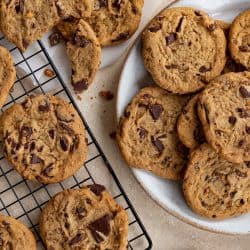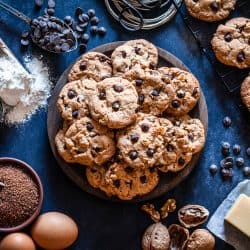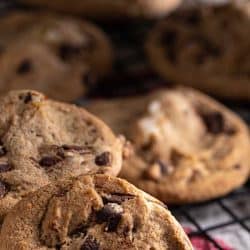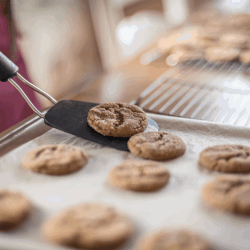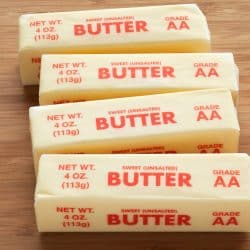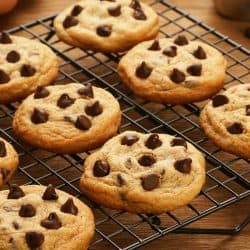If you have savored the wholesome goodness of biting into a warm chocolate chip cookie straight from the oven, you might have wondered how much butter is required for this tasty treat? We've researched this question and have helpful baking advice to share with you.
Chocolate chip cookie recipes do vary a tad, depending on the bakers' tastes and skillset. The average amount of butter used per single batch is 1/2-cup to 1-1/2 cups. Moreover, most recipes call for 1/2-cup of butter. The ratio does vary based on the other ingredients, desired consistency, and texture of the cookies.
Are you curious about how the ratios of butter and flour correlate to create the perfect cookie? Have you wondered if it is possible to make your favorite chocolate chip cookie recipe even better? How does butter work with the other ingredients? Please continue reading; we have great baking advice to share with you!
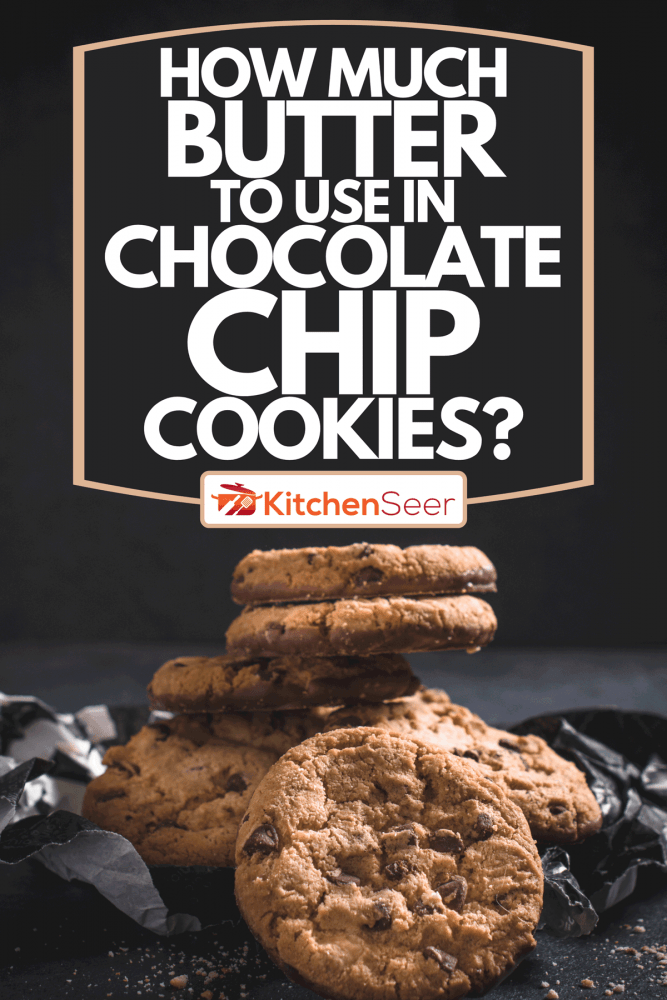
How much butter goes in chocolate chip cookies?
The culinary world has hundreds or possibly thousands of chocolate chip cookie recipes that vary via producing large, medium, or small cookies—textures ranging from chewy, crumbling, thin, and thick. Gluten-free, egg-free, and sugar-free are in the variety of recipe choices as well.
The common denominator is the chocolate chips, and all the other ingredients vary slightly in measurements. The vast majority of chocolate chip cookie recipes call for 1/2-cup of butter or more per single batch. Moreover, many home bakers and professionals will add extra butter to create a buttery cookie that is crispy and thin.
The standard ratio for cookies across the board is stated by a multitude of studies and tests conducted by the Food Network. Cookies are comprised of three parts flour, two parts fat, and one part sugar. Most recipes are based on this measurement ratio, not only chocolate chip but also many other favorites such as sugar cookies and cut-outs.
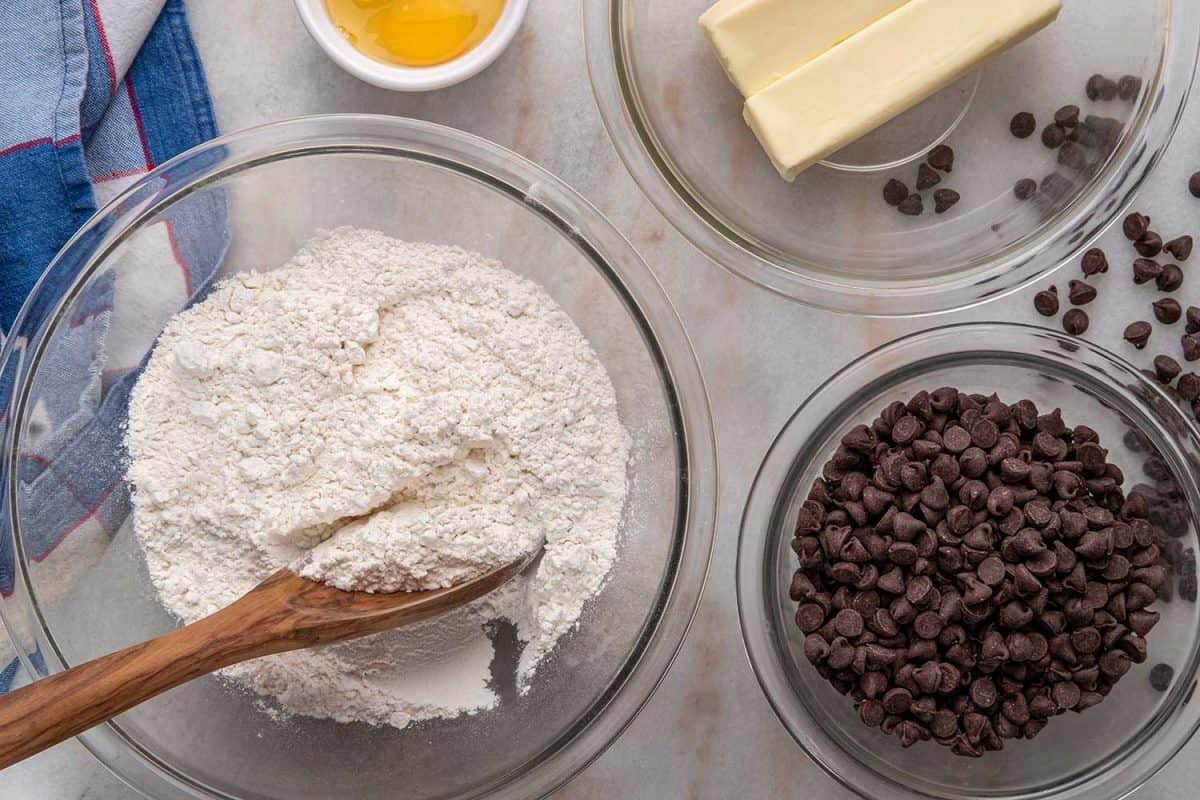
How does the amount of butter affect chocolate chip cookies?
According to Fine Cooking, the about of butter used will greatly affect the texture of the cookie. Butter has a lower melting point than vegetable-based shortenings or margarine. Cookies baked solely with butter will be crisper, flatter, and thinner than those baked with margarine or dairy-free shortening substitutes.
The type of butter used will change the consistency of the dough and the texture of the final result --the baked cookie. Premium European-style butter, which is higher in fat, will yield thin crispy cookies with a butter flavor that is very prominent. Baking butter, which is typically lower in fat content, will also yield crispy thin cookies but will lack the notable buttery flavor that most European-styled butter offers the baker.
Salted butter versus unsalted butter for baking purposes
Many bakers have wondered is there a difference between baking with salted or unsalted butter? Does it pay to invest in unsalted kinds of butter for cookie recipes? According to Cook's Illustrated, a few key differences between the two options will affect the final product's consistency, taste, and texture.
The vast majority of salted butter contains 1.25 percent to 1.75 percent salt of the total weight of the butter. Also, determining how much salt is present in the butter and what the recipe calls for combined can be tricky. Being unsure of the total salt measurement within the recipe is a concern and consideration for those who are on low-sodium diets.
Also, salted butter contains considerably more water than unsalted butter. Generally, the water contents range from 10 percent to 18 percent. The water in the salted butter interferes with the flour and the development of gluten. To consider using unsalted butter is encouraged because it contains far less water that would otherwise affect the consistency of the dough. The majority of professional bakers highly suggest using unsalted butter for this reason.
What happens when you use melted butter in chocolate chip cookies?
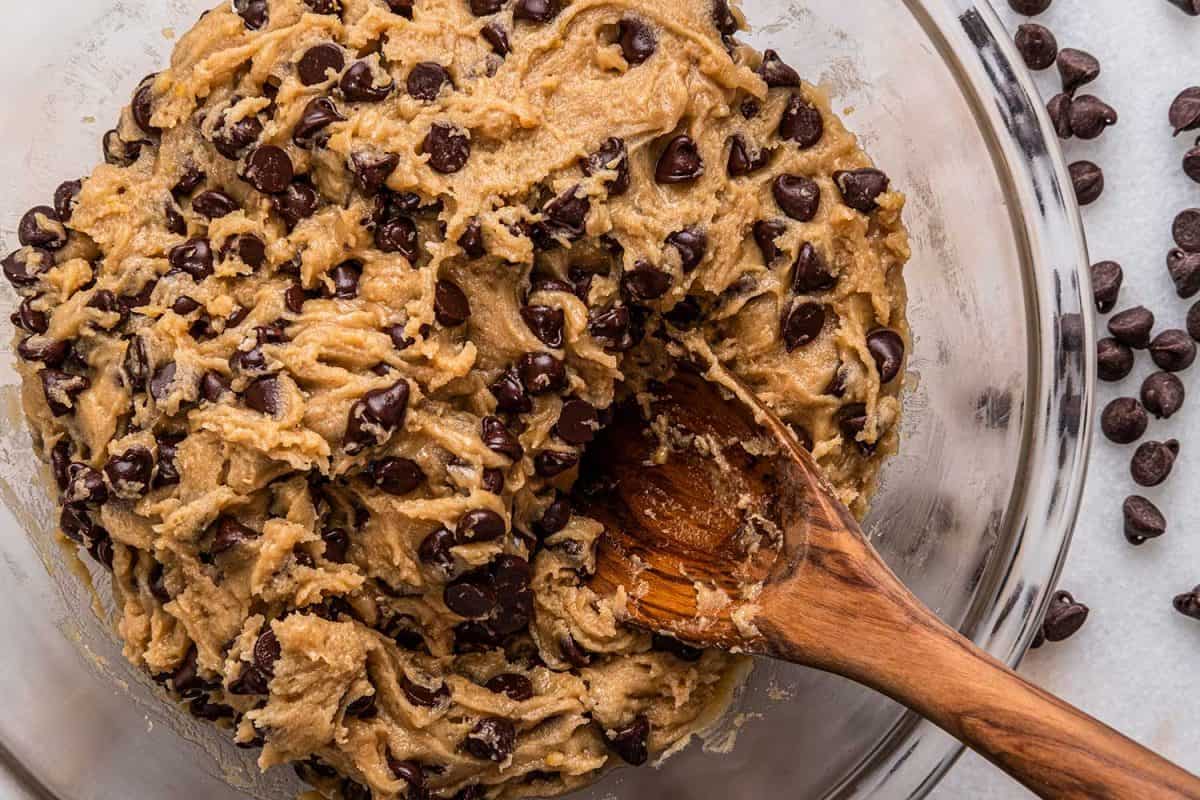
King Arthur Baking states using melted butter will cause the cookies to be very thin and, in some cases, nearly lacelike. The texture and shape of the cookies are dependent on the type of shortening used and its temperature. If you seek to bake crispy thin cookies, using melted butter would be the best option to achieve that goal.
Word of advice --when using melted butter, melt it in a double-broiler on the lowest setting on the stove to avoid evaporation. If any of the butter evaporates from over-heating, it will cause the shortening ratio to be off. When butter is in its liquid state, it mixes evenly with the flour and sugar and creates softer dough; compared to mixing it at the room-temperature softness. Also, the melted butter melds with the flour more efficiently, and the flour creates more gluten with the melted butter.
Click here to read our article about using melted butter for baking.
What happens if you add extra butter to cookies?
Adding extra butter is an option if you want to bake thin, crispy cookies. However, adding a lot of extra butter could cause the cookies to become overly greasy, and the saturation will cause the cookies to fall apart very easily. Greasy cookies are hard to hold and don't dip into glasses of milk without falling apart.
Word of advice --if you have added too much butter and would like to remedy this issue. Add an extra tablespoon or two of flour. Mix the added flour well into the dough. Then cover the bowl of cookie dough and chill it in the refrigerator for an hour or two. Chilling the dough will help the flour absorb those extra fats and balance the dough's flour to shortening ratio.
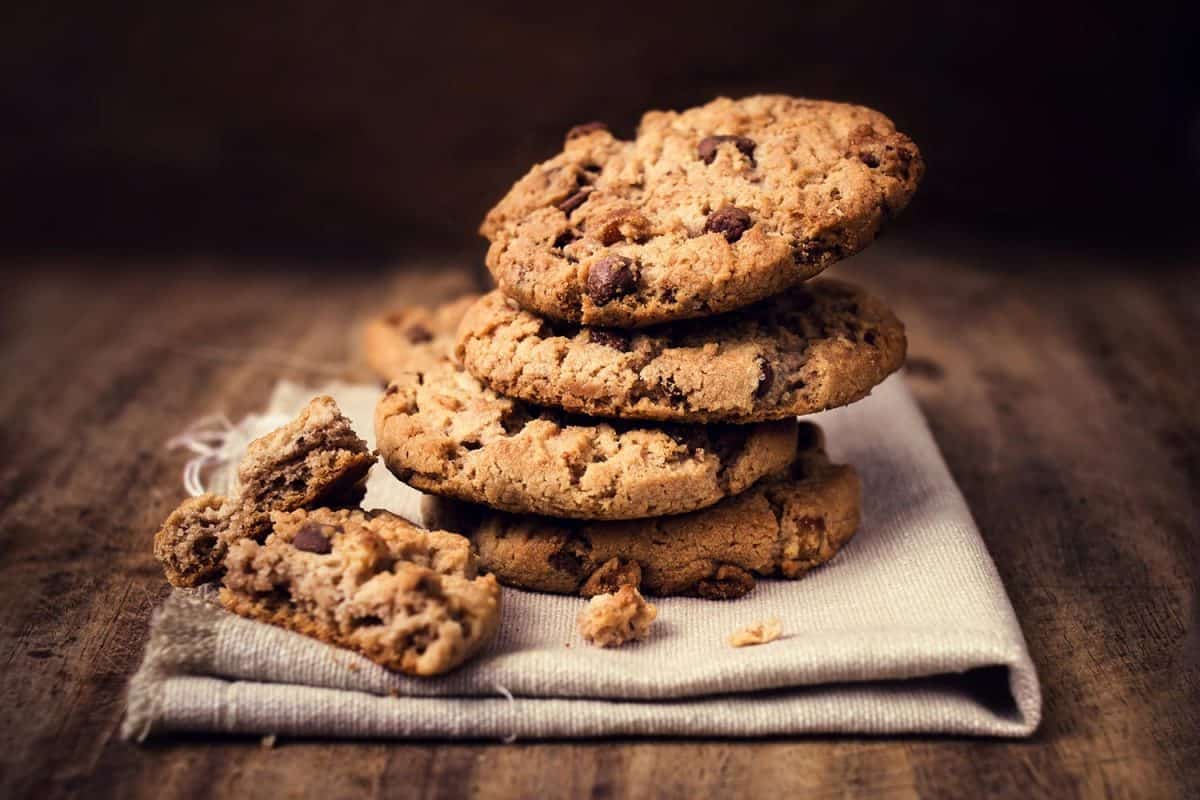
How do you use butter in cookies?
Butter is a versatile ingredient for cooks and bakers alike, adding buttery goodness and depth to most recipes. How does the role of butter apply to the art of baking cookies? When the butter and sugars are blended, the combination helps facilitate air into the dough.
Next, when the other ingredients are added, especially baking soda, a small chemical reaction occurs between the blended butter and sugar --air is delivered to the baking soda or powder. It activates it to expand the tiny air pockets. The baking powder and soda would not activate without the butter or eggs presence, and the cookies would not mix or bake evenly because of the lack of airflow.
Cookie storage advice
You have baked your perfect cookie and have a large batch to share with your family and friends. You may wonder what the best method for storing these fantastic cookies is and where it exists in the marketplace?
Firstly, let the cookies breathe on the cookie sheet for at least 10 minutes to breathe properly. Next, allow the cookies to fully cool on a metal rack before placing them into an airtight container.
Click here to view a cookie rack at Amazon.
The best method of storage is an airtight container. Cookies will dry out quickly and lose much of their flavor if not stored in an airtight cookie jar.
Click here to view an airtight cookie jar at Amazon.
Click here to read our article about how to store cookies properly.
In closing
Baking is an excellent pastime for all ages to help ease stress and build healthy bonds with family and friends. We truly hope this article has helped you further your knowledge banks and will assist you in developing an even better version of your favorite chocolate chip cookie recipe. Please visit Kitchenseer.com soon for more exciting culinary content!



